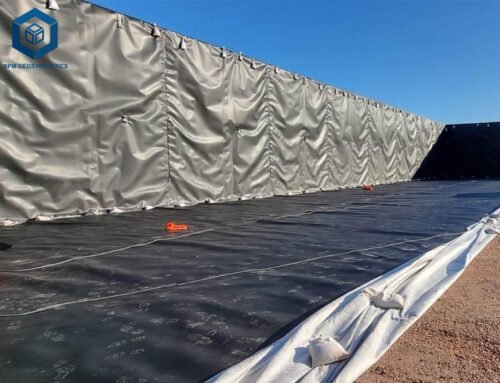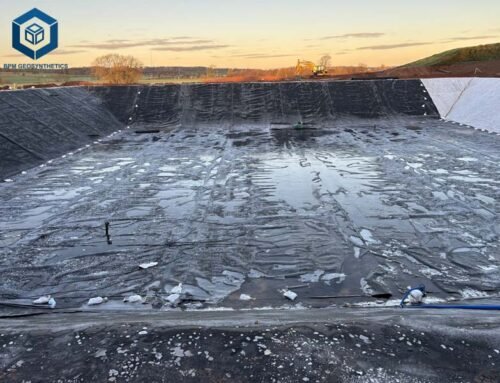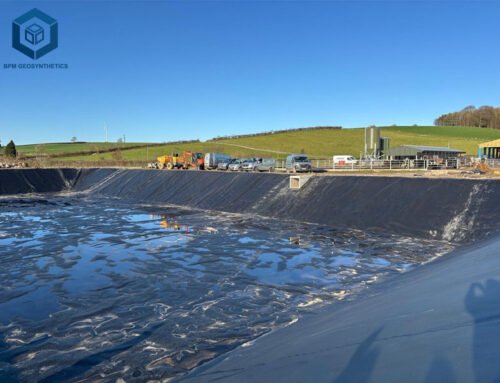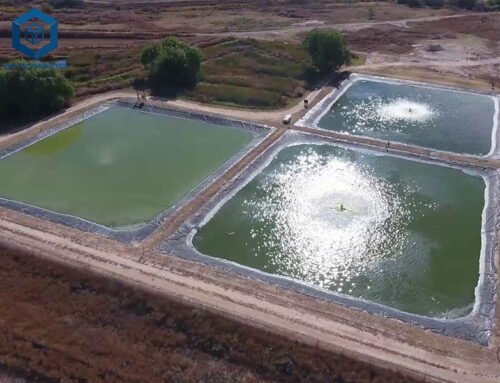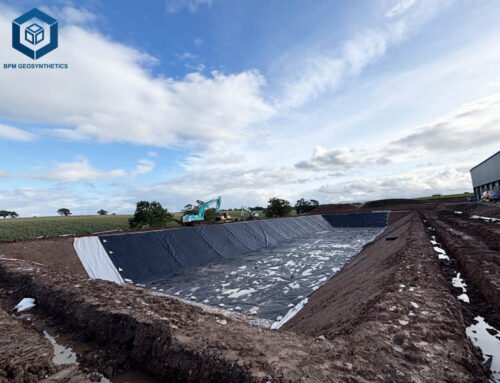Building a fish pond, whether for koi, goldfish, or aquaculture, is a rewarding endeavor that enhances your property’s aesthetic and ecological value. A critical component of any fish pond is the liner, which ensures water retention and creates a safe environment for aquatic life. Understanding fish pond liner price is essential for budgeting and selecting the right material. In 2025, fish pond liner price range from $0.35 to $5 per square foot for materials, with installed costs between $0.50 and $6.50 per square foot, depending on material, thickness, and installation complexity. This comprehensive guide explores the costs, specifications, and factors influencing fish pond liner prices, drawing from industry data and expert insights to help you make informed decisions. With the global geomembrane market projected to grow from $2.3 billion in 2024 to $3.5 billion by 2032 at a 5.5% CAGR, understanding these costs is more relevant than ever.
1. What Are Fish Pond Liners?
Fish pond liners are impermeable membranes that prevent water seepage, protect the pond’s ecosystem, and ensure a stable environment for fish and plants. Unlike general pond liners, fish pond liners must be non-toxic and resistant to UV degradation to avoid leaching harmful chemicals into the water. Common materials include High-Density Polyethylene (HDPE), Ethylene Propylene Diene Monomer (EPDM), Reinforced Polyethylene (RPE), and bentonite clay, each with distinct properties affecting cost and performance.
Why Fish-Safe Liners Matter
Fish-safe liners are critical to maintaining water quality and protecting aquatic life. Non-fish-safe materials, like some PVC liners, can release plasticizers that harm fish and plants. Certifications like NSF-61 (for drinking water safety) or fish-safe ratings from manufacturers ensure the liner is suitable for koi ponds, aquaculture, or natural swimming ponds. Choosing the right liner impacts not only the initial cost but also long-term maintenance and fish health.
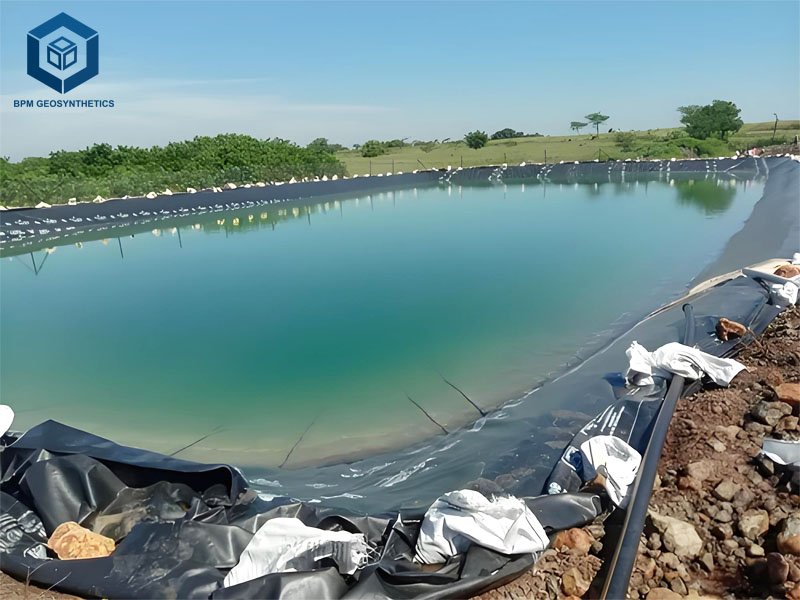
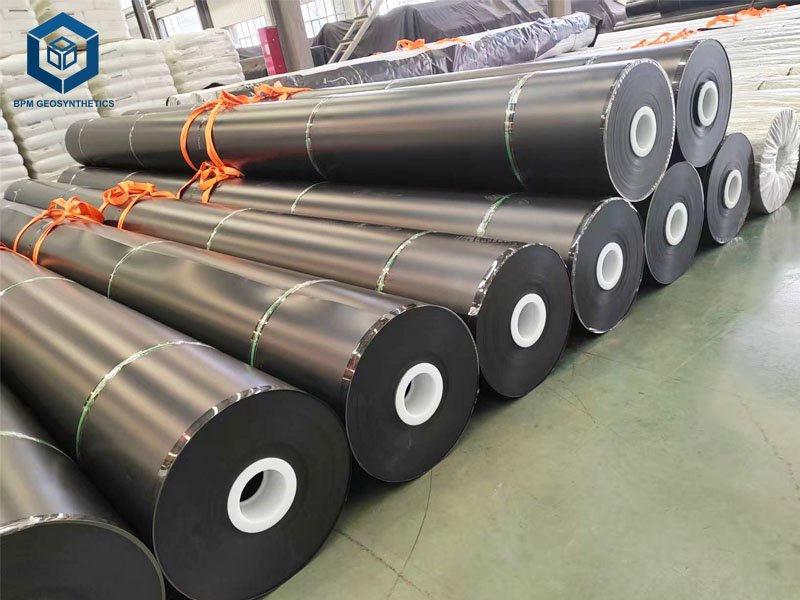
2. Factors Affecting Fish Pond Liner Price
Fish pond liner costs are influenced by several factors, accounting for 40–60% of material costs, 20–30% of installation, and 10–20% of additional expenses like shipping and underlayment. Below are the key drivers:
2.1 Fish Pond Liner Price – Material Type
The material accounts for the largest portion of the cost, with prices varying based on durability, flexibility, and fish safety:
- HDPE: HDPE Geomembrane – $0.62–$1.20 per square foot, durable but stiff.
- EPDM: $0.75–$2.00 per square foot, flexible and fish-safe.
- RPE: $0.40–$0.90 per square foot, lightweight and strong.
- Bentonite Clay: $0.50–$3.00 per square foot, eco-friendly and self-sealing.
- PVC: $0.35–$1.00 per square foot, budget-friendly but often not fish-safe.
2.2 Fish Pond Liner Price – Liner Thickness
Thickness, measured in mils (1 mil = 0.001 inch), affects durability and cost. Thicker liners (e.g., 45 mil vs. 20 mil) cost 10–20% more but last 20–30% longer. For fish ponds, experts recommend:
- HDPE: 30–60 mil
- EPDM: 45–60 mil
- RPE: 24–40 mil
- PVC: 20–30 mil (if fish-safe certified)
2.3 Fish Pond Liner Price – Pond Size
Larger ponds require more material, but bulk purchases reduce costs by 20–30%. A 12×12-foot pond (144 square feet) costs $50–$720 for materials, while a 1-acre pond (43,560 square feet) ranges from $10,000–$50,000.
2.4 Fish Pond Liner Price – Installation Complexity
Labor costs range from $0.20–$1.50 per square foot, with HDPE requiring skilled welding ($0.50–$1.50) and EPDM/PVC being easier to install ($0.20–$0.50). Site preparation, such as clearing rocks or leveling slopes, adds $500–$7,000 for large projects.
2.5 Fish Pond Liner Price – Additional Costs
- Underlayment: $0.25–$0.40 per square foot to prevent punctures, essential for EPDM and PVC.
- Shipping: $0.05–$0.10 per square foot for heavy liners like HDPE; RPE’s foldable nature reduces costs by 20%.
- Customization: Custom sizes add 5–10% to costs.
- Maintenance: Annual inspections and cleaning cost $0.01–$0.05 per square foot.
3. Fish Pond Liner Materials: Costs and Specifications
Selecting the right material involves balancing cost, durability, and fish safety. Below is a detailed comparison of the most common fish pond liner materials, including technical specifications and applications.
3.1 Fish Pond Liner Price – High-Density Polyethylene (HDPE)
- High-density polyethylene (HDPE) geomembrane
- Price: $0.62–$1.20 per square foot
- Specifications:
- Thickness: 0.5–3.0 mm (20–120 mil)
- Tensile Strength: 27 kN/m (ASTM D6693)
- Puncture Resistance: 640 N (ASTM D4833)
- Density: 0.941–0.965 g/cm³
- Lifespan: 20–60 years
- Pros:
- UV and chemical resistant, ideal for large aquaculture ponds.
- Cost-effective for bulk orders (e.g., 43,560 square feet for a 1-acre pond).
- NSF-61 rated options available for fish safety.
- Cons:
- Stiff, requiring skilled welding for seams, increasing labor costs by 10%.
- Heavy, increasing shipping costs ($0.05–$0.10 per square foot).
- Applications: Large fish farms, stormwater retention, and industrial ponds. A 1.0 mm HDPE liner for a 30,000 m² fish farm costs $0.80–$1.20 per square foot.
3.2 Fish Pond Liner Price – Ethylene Propylene Diene Monomer (EPDM) Rubber
- Price: $0.75–$2.00 per square foot
- Specifications:
- Thickness: 0.75–1.5 mm (30–60 mil)
- Tensile Strength: 345–680 lbs (ASTM D7004)
- Puncture Resistance: 202 lbs (ASTM D4833)
- Weight: 0.30 pounds per square foot (45 mil)
- Lifespan: 20–30 years
- Pros:
- Highly flexible, conforms to irregular shapes, ideal for small ponds.
- Fish and plant safe, UV and crack resistant.
- Easy to install, reducing labor costs by 20–30%.
ಸ- Cons:
- Prone to punctures, requiring underlayment ($0.25–$0.40 per square foot).
- Heavier than RPE, increasing shipping costs for large liners.
- Applications: Backyard koi ponds, ornamental ponds, and waterfalls. Firestone PondGard 45 mil EPDM costs $1.00–$1.50 per square foot.
3.3 Fish Pond Liner Price – Reinforced Polyethylene (RPE)
- Price: $0.40–$0.90 per square foot
- Specifications:
- Thickness: 24–40 mil
- Tensile Strength: 680 lbs (machine direction), 650 lbs (transverse direction)
- Puncture Resistance: 2–3 times stronger than EPDM
- Weight: 1/3 of EPDM
- Lifespan: 20–40 years with UV protection
- Pros:
- Lightweight, reducing shipping costs by 20%.
- High puncture and tear resistance, ideal for large ponds up to 65,000 square feet.
- NSF-61 rated for fish and drinking water safety.
- Cons:
- Less flexible than EPDM, requiring careful installation.
- UV protection needed for exposed areas above water.
- Applications: Large fish ponds, agricultural ponds, and organic farming. A 30 mil RPE liner costs $0.44 per square foot with a 20-year warranty.
3.4 Fish Pond Liner Price – Bentonite Clay
- Price: $0.50–$3.00 per square foot
- Specifications:
- Application Rate: 2–5 pounds per square foot
- Puncture Resistance: High, self-sealing
- Lifespan: 20–50 years
- Pros:
- Eco-friendly and non-toxic, ideal for fish and wildlife ponds.
- Self-sealing for small punctures.
- Suitable for any pond size or shape.
- Cons:
- Requires skilled installation for a watertight seal.
- Not ideal for steep slopes or frequent draining.
- Applications: Large fish ponds, retention ponds, and natural swimming ponds. Bentonite costs $0.50–$1.15 per square foot for materials.
3.5 Fish Pond Liner Price – Polyvinyl Chloride (PVC)
- Price: $0.35–$1.00 per square foot
- Specifications:
- Thickness: 15–22 mil
- Tensile Strength: Moderate
- Puncture Resistance: Low, requires underlayment
- Lifespan: 10–15 years
- Pros:
- Cheapest option, ideal for budget-conscious projects.
- Lightweight and easy to install.
- Cons:
- Not fish-safe unless certified, limiting its use.
- UV degradation requires 12″ soil cover.
- Applications: Temporary or small ponds, rarely used for fish due to toxicity concerns.
3.6 Fish Pond Liner Price – Low-Density Polyethylene (LDPE)
- Price: $0.50–$1.10 per square foot
- Specifications:
- Thickness: 17–30 mil
- Tensile Strength: Similar to HDPE but more flexible
- Puncture Resistance: Moderate
- Lifespan: 15–25 years
- Pros:
- More flexible than HDPE, easier to install.
- Fish-safe options available, suitable for small to medium ponds.
- Cons:
- Less durable than HDPE or RPE.
- Higher cost than PVC for similar applications.
- Applications: Small fish ponds, water gardens, and fountains. A 17 mil LDPE liner costs $0.60–$0.90 per square foot.
4. Calculating Fish Pond Liner Size and Cost
To estimate the liner size needed, use this formula:
- Liner Length: Pond length + (2 x average depth) + 2 feet (overlap)
- Liner Width: Pond width + (2 x average depth) + 2 feet (overlap)
Example: A 10×10-foot pond with a 3-foot average depth:
- Length: 10 + (2 x 3) + 2 = 18 feet
- Width: 10 + (2 x 3) + 2 = 18 feet
- Total Area: 18 x 18 = 324 square feet
Cost Breakdown:
- Material: 30 mil RPE at $0.44 per square foot = $142.56
- Underlayment: $0.30 per square foot = $97.20
- Installation: $0.50 per square foot = $162
- Total: $401.76
For a 1-acre pond (43,560 square feet):
- Material: 30 mil RPE at $0.40 per square foot (bulk discount) = $17,424
- Underlayment: $0.25 per square foot = $10,890
- Installation: $0.50 per square foot = $21,780
- Total: $50,094
Use online calculators from suppliers like Everything Ponds or Pondliner.com for precise measurements.
5. Installation Costs and Best Practices
Installation costs range from $0.20–$1.50 per square foot, accounting for 20–30% of the total budget. Proper installation is critical to prevent leaks and extend liner lifespan by up to 25%.
Site Preparation
- Excavation: $2.50–$15.00 per cubic yard, with a $500–$800 minimum fee.
- Land Clearing: $1,500–$7,000 per acre for vegetation removal.
- Smoothing Terrain: Remove sharp rocks and roots to prevent punctures. Use geotextile underlayment ($0.25–$0.40 per square foot) for EPDM, PVC, and LDPE liners.
Installation Techniques
- HDPE: Requires heat-welding for seams, costing $0.50–$1.50 per square foot. Use professional installers to avoid seam failures.
- EPDM and LDPE: Lay loosely to avoid stress tears, costing $0.20–$0.50 per square foot.
- RPE: Lightweight and easier to handle, but requires careful unfolding to prevent creasing.
- Bentonite Clay: Mix with soil and compact with a vibratory roller for a watertight seal.
Common Installation Pitfalls
- Dragging Liners: Can cause tears, voiding warranties.
- Improper Seaming: Leads to leaks, reducing lifespan by 20–25%.
- Lack of Underlayment: Increases puncture risk for EPDM and PVC.
- UV Exposure: PVC and HDPE degrade without 12″ soil cover or UV-resistant coatings.
Installation Tips for Fish Ponds
- Use Fish-Safe Sealants: Secure liners to filtration components with non-toxic sealants.
- Test Water Quality: Before adding fish, test pH and chemical levels to ensure safety.
- Avoid Limestone Edging: Limestone can alter water pH, harming fish. Use gravel or river rock ($12–$33 per linear foot).
- Involve Professionals for Large Ponds: Ponds over 5,000 square feet require experienced installers to ensure structural integrity.
6. Environmental and Fish Safety Considerations
Fish pond liners must be non-toxic and durable to maintain a healthy ecosystem. Key considerations:
- Certifications: Choose NSF-61 or fish-safe certified liners (e.g., EPDM, RPE, specific LDPE). PVC liners often contain harmful plasticizers unless specified otherwise.
- UV Protection: Exposed liners (HDPE, PVC, LDPE) require UV-resistant coatings or 12″ soil cover to prevent degradation.
- Eco-Friendly Options: Bentonite clay is biodegradable and self-sealing, ideal for wildlife and fish ponds.
- Water Quality: Regular testing (pH kits cost $10–$50) ensures a safe environment for fish like koi ($15–$55 each) or goldfish ($2.55–$10).
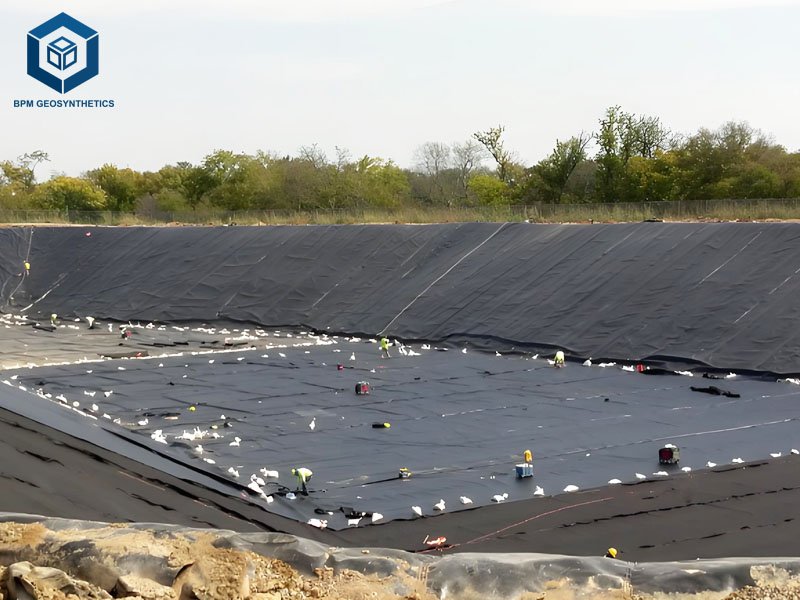
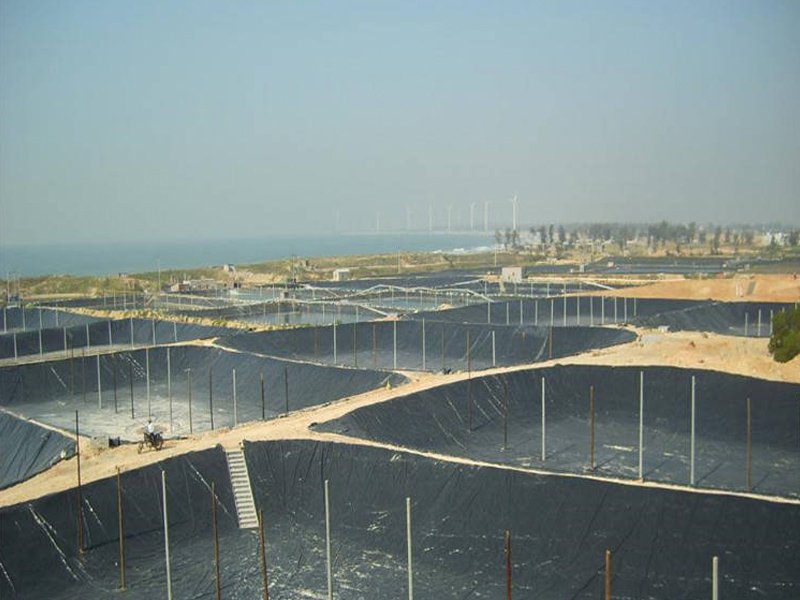
7. Case Studies: Real-World Fish Pond Examples
Small Koi Pond (10×10 feet, 3 feet deep)
- Material: 45 mil EPDM ($1.00 per square foot)
- Liner Size: 18×18 feet = 324 square feet
- Cost Breakdown:
- Material: $324
- Underlayment: $97.20 ($0.30 per square foot)
- Installation: $162 (DIY possible to save $162)
- Total: $583.20
- Outcome: A fish-safe, durable koi pond with a 20-year lifespan, suitable for 5–10 koi fish.
Large Aquaculture Pond (1 acre)
- Material: 30 mil RPE ($0.40 per square foot, bulk discount)
- Liner Size: 43,560 square feet
- Cost Breakdown:
- Material: $17,424
- Underlayment: $10,890 ($0.25 per square foot)
- Installation: $21,780 ($0.50 per square foot)
- Total: $50,094
- Outcome: A cost-effective, fish-safe pond for large-scale fish farming, with minimal seams and a 20-year warranty.
8. Additional Considerations for Fish Ponds
Pond Add-Ons
- Filters: $150–$1,300, depending on pond volume (multiply volume by 1.5 for filter size).
- Skimmers: $100–$700 to remove debris like leaves.
- Bottom Drains: $170–$255 (excluding pipes) for sediment removal.
- Waterfalls: $1,100–$4,300 for aesthetic and oxygenation benefits.
- Edging: $12–$33 per linear foot using gravel or river rock to hide liners and enhance aesthetics.
Permitting and Regulations
- Permits: Check local zoning laws, as permits ($150–$485) may be required for ponds over 1,000 square feet or those affecting public water sources.
- HOA Guidelines: Some communities restrict pond size or design.
- Environmental Impact: Large ponds may require a geotechnical study ($1,000–$5,000) to assess soil quality and ecosystem impact.
Enhancing Property Value
A well-maintained fish pond can increase property value by 5–10%, especially in mild climates where ponds are usable year-round. Koi ponds with clear water and healthy fish add significant aesthetic value, while neglected ponds may reduce value.
9. Conclusion
Fish pond liner prices in 2025 range from $0.35 to $5 per square foot, with installed costs of $0.50–$6.50, depending on material, thickness, and installation complexity. EPDM ($0.75–$2.00) and RPE ($0.40–$0.90) are popular for their fish-safe properties and durability, while bentonite clay ($0.50–$3.00) offers an eco-friendly option for large ponds. HDPE ($0.62–$1.20) suits aquaculture, and LDPE ($0.50–$1.10) is ideal for small, flexible installations. By understanding cost drivers, choosing fish-safe materials, and following proper installation practices, you can create a durable, cost-effective fish pond that enhances your property’s value and supports a thriving aquatic ecosystem.
Contact suppliers like BPM Geomembrane for quotes, samples, and professional installation services to ensure your fish pond meets your needs and budget.

